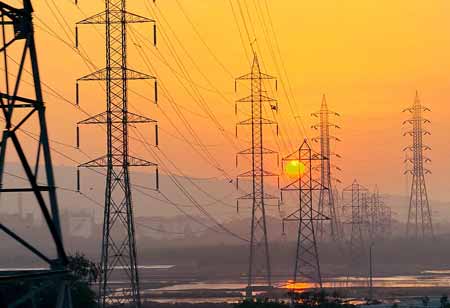Thank you for Subscribing to Electrical Business Review Weekly Brief
I agree We use cookies on this website to enhance your user experience. By clicking any link on this page you are giving your consent for us to set cookies. More info
Unlocking Greater Efficiency with High Voltage Power Transmission
Higher voltage levels enable faster detection and resolution of faults, minimizing the impact of local issues on the entire grid.

By
Electrical Business Review | Monday, July 14, 2025
Stay ahead of the industry with exclusive feature stories on the top companies, expert insights and the latest news delivered straight to your inbox. Subscribe today.
FREMONT, CA: High-voltage electricity transmission is crucial for today’s power systems. The process begins by stepping up the voltage at power stations to transport electricity over long distances, and then stepping it back down for consumer use. One of the primary advantages of this approach is its ability to reduce energy losses during transmission. While constructing high-voltage transmission lines may involve higher upfront costs, the long-term savings make it a worthwhile investment. By utilizing high voltage, we can efficiently deliver large amounts of electricity, even across vast distances.
With lower current requirements, power can be transmitted through thinner conductors, reducing the material needed for transmission lines. Higher voltages allow for overhead transmission lines, which have lower impedance compared to underground cables, further enhancing transmission efficiency. By transmitting electricity at high voltage, the current can be reduced for the same power transfer, decreasing resistive losses in the transmission lines. It means that more of the generated power reaches its intended destination, leading to higher efficiency in the electrical grid. The ability to transmit electricity over longer distances reduces the need to build additional generation capacity closer to consumption centers, resulting in significant cost savings in infrastructure development.
High voltage transmission facilitates better voltage regulation across the grid. It ensures that consumers receive electricity at stable voltages, reducing the likelihood of voltage fluctuations that can damage electrical equipment and disrupt operations. High voltage transmission enhances the resilience of the electrical grid against disturbances and faults. The redundancy built into high-voltage transmission networks enables power to be rerouted through alternate paths in the event of line failures or outages, ensuring continuity of supply to consumers. High-voltage transmission lines facilitate the integration of renewable energy by transporting large volumes of electricity from renewable generation sites to load centers.
Integrating renewable energy sources into the grid necessitates efficient transmission over long distances, often from remote areas with abundant renewable resources to urban centers with high electricity demand. High voltage transmission facilitates the interconnection of regional and national grids, promoting greater energy exchange and coordination between different electricity markets. Interconnection allows surplus electricity from one region to be transferred to areas experiencing shortages, optimizing resource utilization and improving overall system reliability. It enhances grid stability by providing access to various generation sources and balancing resources. Transmitting electricity at high voltage offers numerous advantages for modern power systems' efficiency, reliability, and resilience.








